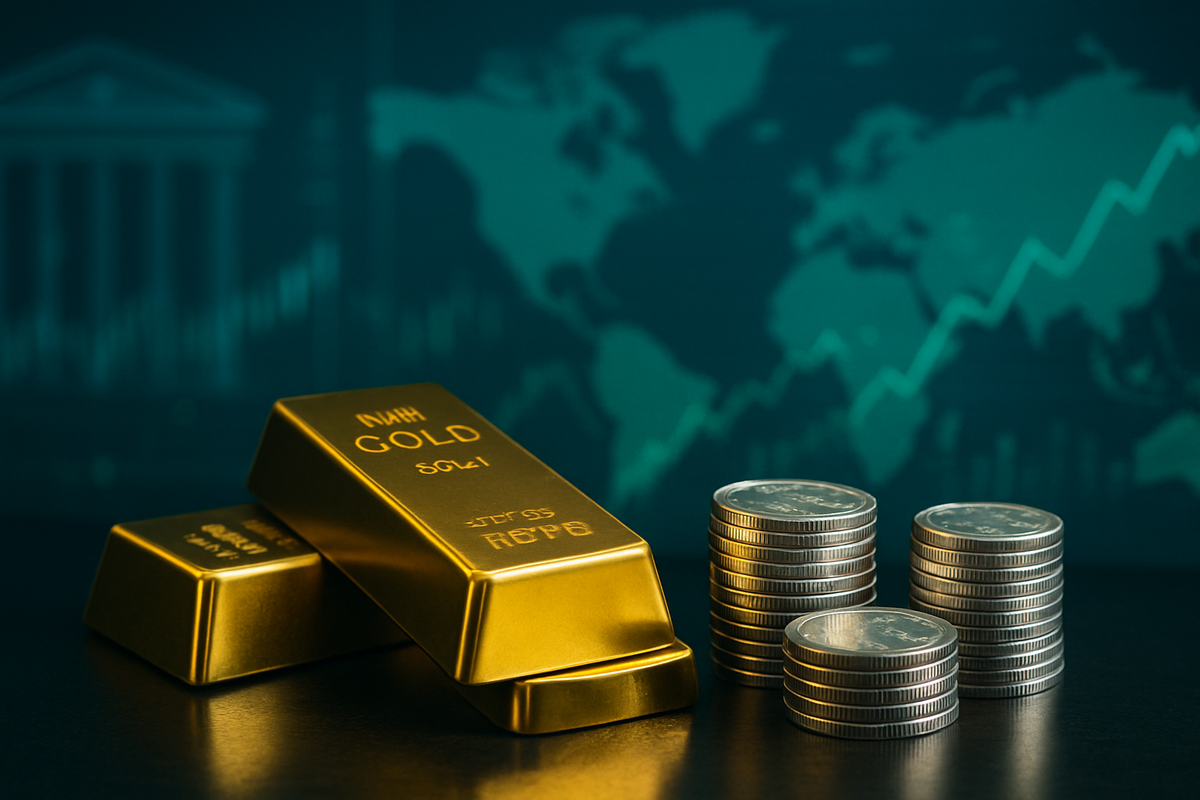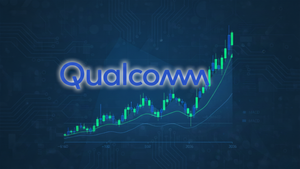
The bullion market in Ahmedabad, a crucial hub for precious metals in India, is currently experiencing a robust surge in gold and silver prices. This upward trajectory mirrors significant global trends, driven primarily by escalating safe-haven demand from investors seeking refuge amidst a volatile economic landscape, and the anticipatory effects of dovish central bank policies worldwide. As of early October 2025, gold prices for 24K in Ahmedabad have climbed to an average of ₹1,20,780 to ₹1,20,920 per 10 grams, while silver commands prices between ₹1,54,900 and ₹1,56,000 per kilogram. This pronounced rally underscores a widespread sentiment of caution and a flight to tangible assets in the face of persistent macroeconomic uncertainties.
The local market's performance is intrinsically linked to international spot prices, which have seen gold futures on the Comex exchange surpass the $3,900 per ounce mark, with December futures reaching as high as $3,935. Silver, not to be outdone, has also demonstrated remarkable strength, globally touching a 14-year high of $48.59 per ounce. This global bullishness, fueled by concerns over a potential US government shutdown, renewed tariff disputes, and broader global growth anxieties, is creating a powerful tailwind for precious metals, making them increasingly attractive to both institutional and retail investors seeking to hedge against inflation and currency debasement.
Unpacking the Surge: A Confluence of Global and Local Factors
The current upward momentum in gold and silver prices in Ahmedabad is a direct reflection of a complex interplay of global macroeconomic and geopolitical developments. Throughout 2025, the precious metals market has been building significant bullish sentiment. Gold prices, in particular, have witnessed an an impressive rally, appreciating by nearly 50% year-to-date, a clear indicator of growing investor apprehension and a decisive shift towards safety. This trend culminated in early October 2025, with global spot gold maintaining a firm stance near $3,860 per ounce and silver around $45.20 per ounce, directly influencing the Ahmedabad market where 24K gold on October 6, 2025, was priced at ₹12,082 per gram, up ₹137 from the previous day.
A critical timeline marker for this rally is the increasing market expectation of a dovish shift from the US Federal Reserve (the Fed). Markets are currently pricing in a 95% probability of a Fed rate cut in October 2025, with further cuts anticipated in December. This expectation significantly reduces the opportunity cost of holding non-yielding assets like gold and silver, making them more appealing compared to interest-bearing alternatives. Simultaneously, geopolitical tensions, including renewed tariff concerns and the looming threat of a US government shutdown, have intensified safe-haven demand. Key players involved include global central banks, particularly those in emerging markets, which have been aggressively accumulating gold to diversify reserves away from the US dollar, a trend accelerated by geopolitical uncertainties. This unprecedented buying spree by official institutions is creating substantial demand pressure and tightening market supply.
The initial market reaction has been overwhelmingly positive for precious metals. Investors are reallocating capital into gold and silver, viewing them as essential hedges against potential economic downturns and currency debasement. In India, the festive season, including Navratri and Dussehra, further amplifies local demand, providing additional support to prices in markets like Ahmedabad. The Multi Commodity Exchange (MCX) in India has seen increased trading volumes, reflecting strong investor interest, with gold futures projected to trade between ₹1,20,000 and ₹1,22,000 per 10 grams by Diwali.
Corporate Fortunes: Winners and Losers in the Bullion Boom
The sustained rally in gold and silver prices presents a mixed bag for public companies, creating significant opportunities for some while posing challenges for others. Mining companies, particularly those with substantial gold and silver reserves, stand to be major beneficiaries. Companies like Barrick Gold Corp. (NYSE: GOLD) and Newmont Corporation (NYSE: NEM), two of the world's largest gold producers, will likely see increased revenue and profitability as the value of their primary commodities rises. Similarly, silver miners such as Pan American Silver Corp. (NASDAQ: PAAS) are poised for strong performance. These companies could experience improved margins, allowing for increased exploration budgets, debt reduction, or enhanced shareholder returns through dividends and buybacks.
Conversely, industries heavily reliant on gold and silver as raw materials might face headwinds. Jewelry manufacturers, for instance, could see their input costs surge, potentially squeezing profit margins or necessitating price increases for consumers, which could dampen demand. Retail jewelers in India, while benefiting from festive season demand, might struggle with inventory management and pricing strategies if prices become too volatile. Companies like Titan Company Limited (NSE: TITAN), a prominent Indian jeweler, will need to carefully navigate these rising costs. Electronics manufacturers, which use silver in various components, might also experience increased production costs.
Furthermore, investment firms with significant holdings in precious metal ETFs or directly in bullion will likely see their portfolios appreciate. For example, SPDR Gold Shares (NYSE Arca: GLD) and iShares Silver Trust (NYSE Arca: SLV), two of the largest precious metal ETFs, have seen substantial inflows and price appreciation, benefiting their asset managers. However, financial institutions that have short positions on gold or silver, or those heavily invested in assets that underperform during periods of high inflation and economic uncertainty, could experience losses. The banking sector, in general, might face challenges if the underlying economic conditions driving safe-haven demand lead to broader market instability.
Broader Implications: A Shift in Global Financial Tides
The current surge in gold and silver prices is not an isolated event but rather a significant indicator of broader shifts within the global financial landscape. It underscores a growing lack of confidence in traditional fiat currencies and government bonds, particularly amidst persistent inflation concerns and an uncertain interest rate environment. This event fits squarely into a trend of de-dollarization, where central banks globally are diversifying their reserves. The aggressive gold accumulation by central banks, especially in emerging markets, is a testament to this strategic pivot away from a singular reliance on the US dollar, driven by geopolitical tensions and the desire for greater financial autonomy.
The potential ripple effects extend to various sectors. Competitors in the investment space, such as traditional equity and bond markets, may see capital outflows as investors reallocate towards precious metals. This could particularly affect growth stocks if the economic outlook becomes more pessimistic. Partners in the supply chain, from refiners to logistics providers, will experience increased activity, though they must also contend with the higher value and security risks associated with transporting precious metals. Regulatory bodies might also scrutinize market activity more closely, especially if price volatility leads to concerns about market manipulation or excessive speculation.
Historically, precious metals have served as reliable hedges during times of economic distress and geopolitical instability. The current scenario draws parallels to periods like the 1970s, characterized by high inflation and geopolitical shocks, and the 2008 financial crisis, when safe-haven assets surged. These historical precedents suggest that the current rally could be sustained as long as the underlying drivers – inflation, geopolitical risk, and central bank dovishness – persist. The regulatory implications could include a renewed focus on commodity market oversight to ensure stability and transparency, especially if the rally continues to attract a broader range of investors.
The Road Ahead: Navigating a Bullish Precious Metals Market
Looking ahead, the trajectory for gold and silver prices appears bullish in both the short and long term, though subject to evolving macroeconomic conditions. In the short term, the anticipated Fed rate cuts in late 2025 are expected to provide further impetus, reducing the opportunity cost of holding non-yielding assets. Experts forecast international gold prices to trade between $3,950 and $4,000 per ounce by Diwali (around October 21), translating to ₹1,20,000 to ₹1,22,000 per 10 grams on India's Multi Commodity Exchange (MCX). Silver is projected to reach $49–$50 internationally, or ₹1,48,000–₹1,50,000 per kilogram on the MCX.
For the long term, the outlook remains robust. Some analysts predict gold could climb towards or even beyond $4,000 per ounce by mid-2026, with ambitious forecasts for silver exceeding $200 per ounce by 2030, signaling a potential "super bull run." This sustained growth will likely be underpinned by gold's enduring effectiveness as a hedge against stagflation, recession, currency debasement, and US policy risks. Potential strategic pivots for investors and corporations include diversifying portfolios to include a higher allocation of precious metals, and for mining companies, focusing on expanding production and optimizing operational efficiency to capitalize on higher prices.
Market opportunities will emerge for investment vehicles tied to precious metals, such as ETFs and mining company stocks. Challenges may include increased price volatility and the need for robust risk management strategies. Potential scenarios range from a continued steady ascent, driven by persistent inflation and geopolitical instability, to more rapid surges if a significant global economic shock occurs. Conversely, a sharp reversal in central bank policy or a significant de-escalation of geopolitical tensions could temper the rally, though such a scenario appears less likely given current global dynamics.
Conclusion: A Golden Era for Precious Metals Amidst Uncertainty
The current surge in gold and silver prices in the Ahmedabad market, mirroring powerful global trends, represents a significant moment in financial markets. The key takeaways are clear: precious metals are firmly re-established as premier safe-haven assets, attracting capital amidst a landscape of persistent inflation, geopolitical tensions, and dovish central bank policies. The aggressive accumulation by global central banks further solidifies their role as strategic reserve assets, signaling a long-term shift in global financial architecture.
Moving forward, the market is poised for continued strength in gold and silver. Investors should closely watch central bank pronouncements, particularly from the US Federal Reserve, for any shifts in monetary policy. Geopolitical developments, especially those impacting global trade and stability, will also remain critical drivers. The industrial demand for silver, particularly from burgeoning sectors like renewable energy and electronics, will provide an additional layer of support to its price.
In essence, the current environment points towards a "golden era" for precious metals, offering a compelling proposition for investors seeking to preserve wealth and hedge against uncertainty. The lasting impact of this rally could redefine portfolio allocations, with a greater emphasis on tangible assets as a bulwark against future economic shocks. What investors should watch for in the coming months are sustained central bank buying, inflation metrics, and the trajectory of global interest rates, all of which will play a pivotal role in shaping the future of gold and silver.
This content is intended for informational purposes only and is not financial advice





